 |
Natural History of the
Canary Islands – part 1
by Teresa Farino and John Muddeman
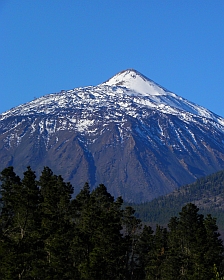 El Teide, Tenerife© Teresa Farino El Teide, Tenerife© Teresa Farino
An Introduction
The Canary archipelago comprises seven principal volcanic islands - Lanzarote, Fuerteventura, Gran Canaria, Tenerife, La Gomera, La Palma and El Hierro - plus a number of lesser islets, adrift in the Atlantic Ocean, around 100 km from the coast of north-west Africa and more than 1,100 km from mainland Spain, by which it was annexed in the fifteenth century. Along with Madeira and the Azores, the Canaries are part of the biogeographic region of Macaronesia, renowned for its incredible plant and animal diversity. The largest island is Tenerife, covering just 2,035 square kilometres and rising 3,715 metres above sea level to culminate in Spain's highest peak, El Teide.
Although in the past it has been suggested that the easternmost Canary Islands - Fuerteventura and Lanzarote - were once attached to the African mainland, today most authorities agree that all the islands in the Canary archipelago are truly oceanic and have never been linked to a continental land mass at any time. They were formed as a result of eruptive phenomena taking place in zones of weakness in the Earth's crust, more than 2,000 m below the surface of the ocean, and in effect represent the tips of a series of volcanoes, some of which are still active today.
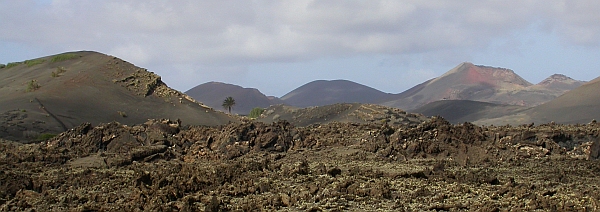 Lava field - Timanfaya National Park, Lanzarote© Teresa Farino Lava field - Timanfaya National Park, Lanzarote© Teresa Farino
Geological evidence exists to demonstrate that the seven islands of the Canary archipelago appeared at different times. Fuerteventura and Lanzarote, which perch atop the same block of parent material, are the oldest islands, thought to have reached the surface around 20 million years ago, 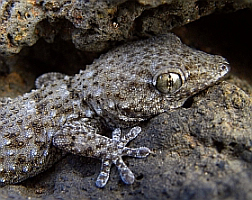 Tenerife Gecko Tarentola delalandii© Teresa Farinowhile the westernmost islands of La Palma and El Hierro are the youngest, considered to be just 1.5-3 million years old. Sporadic volcanic activity has persisted into historic times on all the islands except for La Gomera, which has been inactive for more than four million years. Although the most recent terrestrial eruption occurred in the south of La Palma, in 1971, at the time of writing a submarine volcano is nearing the surface some five kilometres from the southern coast of El Hierro. The Timanfaya National Park, on Lanzarote, probably harbours the best-preserved volcanic landscape on the archipelago. Tenerife Gecko Tarentola delalandii© Teresa Farinowhile the westernmost islands of La Palma and El Hierro are the youngest, considered to be just 1.5-3 million years old. Sporadic volcanic activity has persisted into historic times on all the islands except for La Gomera, which has been inactive for more than four million years. Although the most recent terrestrial eruption occurred in the south of La Palma, in 1971, at the time of writing a submarine volcano is nearing the surface some five kilometres from the southern coast of El Hierro. The Timanfaya National Park, on Lanzarote, probably harbours the best-preserved volcanic landscape on the archipelago.
Ever since the islands broke free of the ocean they have been subject to the erosive forces of sea, wind and rain; over millennia these sterile mounds of lava and volcanic ash have undergone a process of weathering to produce small pockets of soil, in which the first plants - arriving as wind- or water-borne seeds - were able to gain a tenuous foothold. Today more than 2,000 species of vascular plants occur in the Canary Islands, although only about 1650 are thought to have arrived under without the aid of man, but of these more than 40% are found nowhere else in the world.
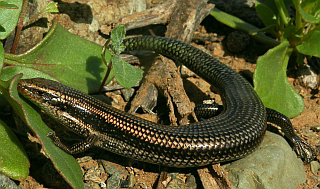 Gran Canaria Skink Chalcides sexlineatus© Teresa Farino Gran Canaria Skink Chalcides sexlineatus© Teresa Farino
Similarly, the first animals to colonize the Canaries had to arrive under their own steam, crossing many kilometres of open water in which to do so. Isolated from continental influences, these species were then at liberty to follow their own evolutionary paths, generating a fauna exceptionally rich in endemic taxa. This is perhaps most evident among the reptiles - fourteen unique species of lizards, skinks and geckos are scattered across the archipelago - and the invertebrates, new taxa of which are being discovered every year.
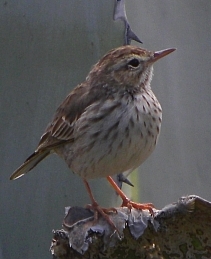 Berthelot's Pipit Anthus berthelotii© Teresa Farino Berthelot's Pipit Anthus berthelotii© Teresa Farino
However, the Canaries are also home to five bird species - Bolle's Pigeon (Columba bollii), Laurel Pigeon (Columba junoniae), Canary Islands Stonechat (Saxicola dacotiae), Canary Islands Chiffchaff (Phylloscopus canariensis) and Blue Chaffinch (Fringilla teydea) - that are found nowhere else in the world. Four other Canary Island species occur exclusively in Macaronesia - Atlantic Canary (Serinus canaria), Berthelot's Pipit (Anthus bertholotii), Plain Swift (Apus unicolor) and the very scarce and declining Macaronesian Shearwater (Puffinus baroli) - while a number of essentially North African bird species, such as the Barbary Falcon (Falco pelegrinoides), have their only European breeding grounds here. In addition, the Canaries also host two endemic terrestrial mammals: the Canary Shrew (Crocidura canariensis) and the Canary Big-eared Bat (Plecotus teneriffae).
|